Fun facts about Iceland – Strange customs, weird laws and interesting facts
15. ágúst 2022
Fun facts about Iceland – Strange customs, weird laws and interesting facts
15. ágúst 2022
All countries have their set of weird customs and laws and Iceland is no exception. From legends of elves to a decades-long ban on beer, the Christmas Book Flood to state-owned milk stores, there are loads of quirks and weird facts about Iceland’s history. Did you know it’s considered one of the world’s first democracies? Or that it’s one of only three European countries without a McDonald’s? We’ve rounded up the most fascinating facts about Iceland to prepare you for your visit. Once you’ve got to grips with the weird and wonderful folklore and legends, we have lots of tours and activities in Iceland that can bring these tall tales to life.
The Most Northerly Capital
Of all the 195 UN-recognised countries in the world, Iceland has the most northerly capital city. Reykjavik may sit beneath the Arctic Circle, but it still boasts the title of most northerly capital in the world. As a result, in winter you’ve got a good chance of spotting the Northern Lights if you head just outside the city limits away from the light pollution. And, in summer, you can catch the Midnight Sun around the 21st June – the summer solstice.
Mjólkurbúð – Milk Store
Between 1910 and 1977, the only place in Iceland you could buy milk was from one of the state-owned Milk stores. These were originally opened due to increased demand for cleanliness regarding agricultural produce.
Over the years, people complained about the stores in open letters to newspapers. The most common complaints were that the shop assistants were rude and that the stores' opening hours were sporadic at best. Sometimes the stores would simply run out of milk. On 1 February 1977, the last state-run milk store was closed.
Beer was banned until 1989
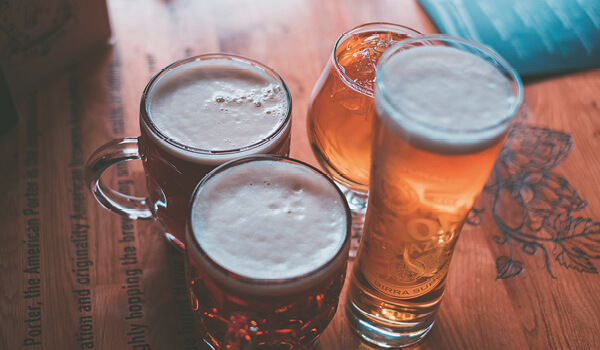
In 1915, a complete prohibition was in place across Iceland. In 1922 the government decided to allow Spanish wine because the Spanish were an important trading partner and they drove a hard bargain: Either Iceland would keep on buying wine from them or they would stop buying salted cod (Iceland’s most profitable export at the time). Prohibition was abolished in 1935, but beer remained banned because some believed it made people drink more and its cultural ties with Denmark were seen as unpatriotic after Iceland gained independence.
In the decades that followed, the discussion over legalising beer was the country’s hot topic with televised debates attracting a lot of attention. Eventually, the beer ban was lifted on 1 March 1989. Now Iceland celebrates beer day on March 1st every year. It’s not the raucous bacchanalia that tourists envisage (like, perhaps, Oktoberfest), but you don’t have to wait until March 1st to enjoy drinking beer like a Viking warrior.
• Embrace the post-prohibition era on our Beer & Booze Tour
Imitation beer was also banned
While beer was still banned in Iceland between 1935 and 1989, Icelanders could still buy as much wine and spirits as they wanted.
The closest thing you could get to proper beer was Pilsner with 2.25% alcohol (which is still the only "beer" you can buy in convenience stores in Iceland). In the early 1980s, Icelanders started to travel more, familiarising themselves with the beer culture of the rest of Europe. The first ever tavern to open in Iceland was Gaukur á Stöng in downtown Reykjavík, where the bartenders started blending Pilsners with vodka or whisky to make a so-called imitation beer which had an alcohol percentage of roughly 5%.
This quickly became a popular drink, and other bars started making their version of this faux beer. Icelanders in the know, all agreed that imitation beer was nowhere near as good as the real thing. In 1985, after complaints about the uncleanliness of bars serving this fake beer concoction, the government decided to ban imitation beer as well.
One of the First Parliaments in the World
Iceland is said to be one of the world’s oldest democracies as our ancient parliament, the Althing, dates back to 930 AD and is considered one of the first parliaments. It was formed between the lava fields and rocky ravines of Þingvellir, where the two continental plates meet. A flag stands at the spot where the parliament first gathered.
• Visit this spot yourself on one of our Golden Circle tours in Iceland.
No TV on Thursdays and in July

Until 1986, Iceland only had one TV channel, run by The Icelandic National Broadcasting Service. Before the INBS started broadcasting in 1966, we had "Kana-sjónvarpið" or "The American TV" from the American army base in Keflavík. When "The TV" (as our first TV channel was called) first aired, it only broadcast on Wednesdays and Saturdays. Gradually, it increased to every day of the week apart from Thursdays and everyone got a month off in July. It wasn’t until 1983, that “The TV” aired in July. Then, in October 1987, a year after Channel 2 was founded, the INBS started broadcasting on Thursdays as well.
Dogs were forbidden in the capital
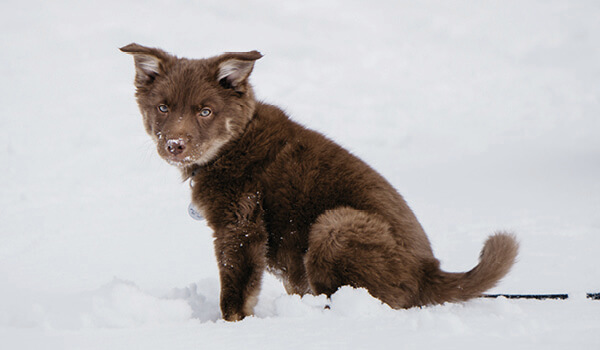
In 1924, a complete ban on dogs was enforced in Reykjavík. Those out in the countryside could own working dogs for farming, but in the city, it was illegal to keep a dog as a pet due to increased cases of fatal tapeworms passed on from dogs. The rules have since changed and people can own dogs in Reykjavik if they get permission from the municipality and pay a registration fee. But Reykjavik has remained culturally a cat city, with felines prowling the streets, pawing at doors and winding around the legs of tourists asking for a scrap of fish. It’s estimated that there’s one cat for every ten residents in Reykjavik.
Takk fyrir síðast
When Icelanders meet again after a party or a gathering, we say "takk fyrir síðast" or thank you for that last time. It might sound odd but it's a way to acknowledge that we did really enjoy the last time we spent time together.
The Icelandic Elves
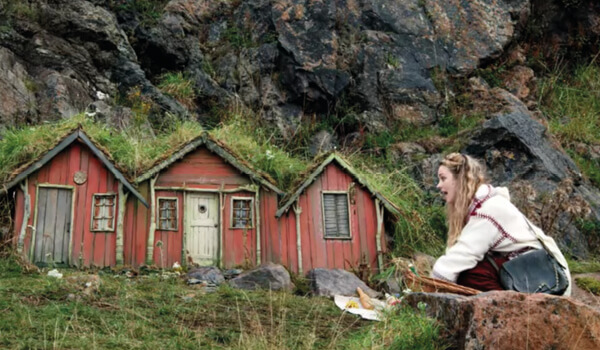
Many Icelanders still believe in elves, or the huldufolk (the hidden people). In a survey in 1998, 54.4% of Icelanders said they believed in elves in some form. There is a belief that building roads through elf territory can result in terrible consequences, and the Icelandic belief in elves is so strong that the Icelandic Road and Coastal Administration department has a five-page standard reply for queries and complaints about elves. Of course, not every Icelander believes in elves, and there are varying degrees of belief with some hardcore believers and some more on the fence. But the folklore and legend of Icelandic elves is certainly woven into the culture of the island. To be fair, it’s hard to look at Iceland’s rugged and ethereal scenery and not believe in the fae folk.
• Discover the history and myths of the country with our guided tours in Iceland
Film intermission
If you watch films from the early days of Hollywood, you see that they have overture, intermission and exit music. It did not take long for the practice to fade out all over the world but it did not entirely stop in Iceland. If you go to the cinema here, there's always an intermission roughly in the middle of the film. It’s a chance to go to the toilet and fill up on your drink/popcorn. As cinemas make most of their profit during intermission, it's unlikely that this custom will be abandoned in the foreseeable future.
Single lane bridges
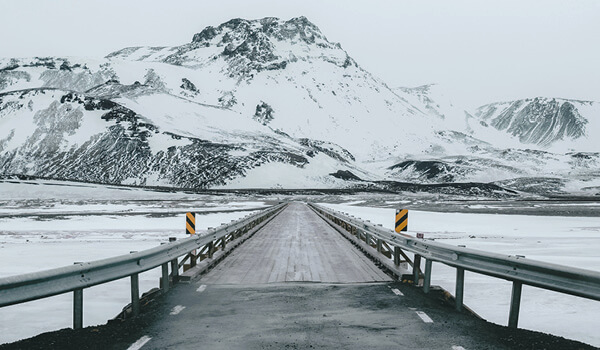
Driving across the Icelandic countryside, you might come across single-lane bridges, passing over crystal-clear, glacial rivers. They are relics from decades ago when cars were so few and far between that making two-way bridges seemed extravagant. Today, however, the increase in traffic across the island means that extra care should be taken at these bridges. If there is a car coming from the other direction make sure it will give way and if not, you must give way. The roads of the south coast have quite a few single-lane bridges.
• Avoid the confusion of who gives way to who with one of our guided South shore tours in Iceland
We are always outnumbered
Iceland has a population of around 375,00 people. If you count all Icelanders that have ever lived since the settlement of Iceland in the late 9th century, the population does not reach one million. If we count all the tourists as well, we've long since surpassed one million; last year alone, Iceland received almost two million travellers. So in any one year, Iceland will probably see five times its own population in tourists.
The Arctic Fox
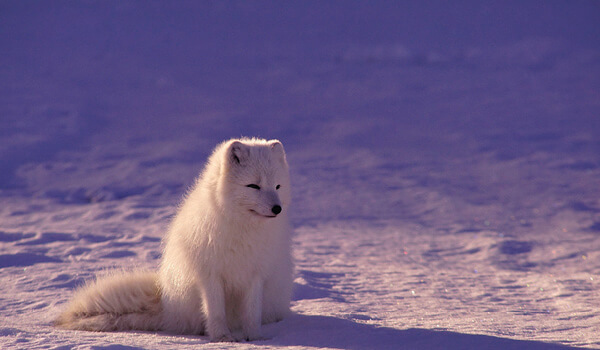
Iceland has but one native mammal, and it is the arctic fox. Its thick white (or blue or brown) coat changes colour depending on the season, so it blends into the rugged landscape. This makes it a tricky animal to spot. The other mammals you might see in Iceland – the cows, sheep, reindeer and horses – were all brought by settlers. The arctic fox is thought to have arrived on Iceland after the last Ice Age when the sea between Greenland and Scandinavia was frozen over.
Shoes off, please!
This isn't strictly a law, but Icelanders do not take well to people barging into their houses in shoes. We all leave our shoes by the front door. All flats and houses have a designated area by the front door where you take off your coat, hats, scarves, gloves and shoes. We find it perplexing when people wear their boots indoors, but this might also have something to do with our weather.
• One place you certainly have to take your shoes off is at the geothermal lagoons and pools in Iceland
The Christmas Book Flood
Each year, Christmas Eve sees most of the country curl up with a mug of something hot and a new book. The ‘Jolabokaflod’ (roughly meaning, Christmas book flood) is when the publishing houses of Iceland gear up to an evening of gift-giving on the 24th of December, with most Icelanders receiving a new book and reading it through the night. After the Second World War, paper was one of the few things that was not rationed and since then, the gifting of books at Christmas became ingrained in Icelandic festive culture.
Icelandic Horses are Forbidden to Return
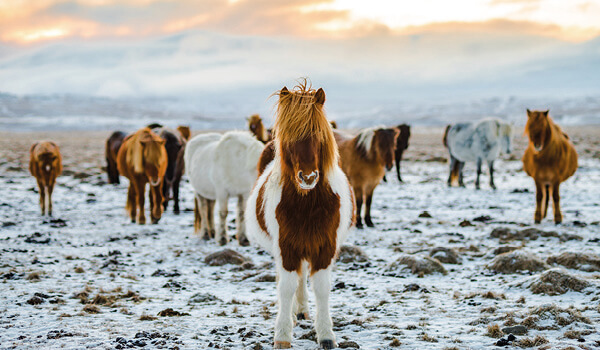
One of the fun facts about Iceland is that, once they leave the country, Icelandic horses are not allowed to return. Basically, Icelandic horses are a pure breed (having been isolated for over 1000 years) and are prized across the world for their hardiness. Iceland is a country completely free from hoof and mouth diseases, so we cannot risk re-importing a horse once it has left Icelandic soil. It’s also to ensure the purity of the bloodlines remains intact in all Icelandic horses.
• Experience the purity of Icelandic horses first-hand on a tour that includes horseriding
A Nation of Peace
Iceland is not just peaceful in terms of population and quiet wilderness, it also doesn’t have an army, air force or navy. It relies solely on NATO for its defence. Of course, there is a coast guard to keep fishermen and sailors safe. The coast guard saw action during the ‘Cod Wars’ throughout the 20th century, a conflict over fishing rights in the North Atlantic. After a series of skirmishes, Iceland won without the use of an established military.
You Won’t Find a Big Mac
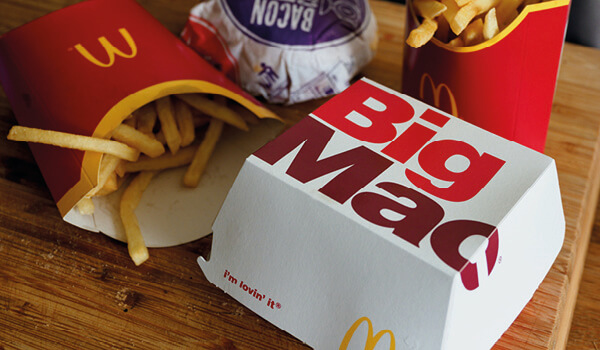
There are only two countries in Europe that don’t have McDonald’s (ok, three if you include the Vatican) and Iceland is one of them. A lone outpost of the US burger chain operated in central Reykjavik for a few years, but the financial crisis saw its demise in 2008. McDonald’s had always struggled to win over the Icelandic public anyway, with locals favouring the Hambórgarabúllan restaurant (Tommi’s Burger Joint) instead. Of course, there are plenty of burger joints in Iceland, including Hagavagninn and Smass. You just won’t find a Big Mac while you’re here.
The Yule Lads
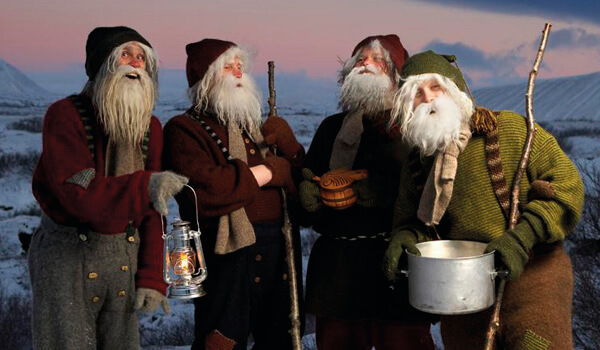
Instead of one omnipotent Santa Claus, Icelandic kids have to contend with thirteen ‘Yule Lads’ who visit one by one on the thirteen days leading up to Christmas. Kids leave their shoes out on the window ledge and if they have been good, the shoe will be filled with sweets. If they have been bad, they’ll awake to a shoeful of rotten potatoes. The Yule Lads used to be a lot more terrifying, but in 1746 parents were officially banned from winding their children up with scary tales of monsters. Each Yule Lad has a distinct personality and proclivity, from stealing sausages to licking spoons and slamming doors to keep everyone awake.
• Learn about each individual Yule Lad on the Reykjavik Christmas Walk.
So there you have the fun facts about Iceland – sausage-stealing santas, elves, beer bans and ancient democracies. There’s no denying that it’s a country instilled with quirky folklore, weird traditions and a hint of other-worldly magic. We’ve got a selection of guided tours and activities to help you get to know this strange but wonderful country isolated in the wild North Atlantic.
Áhugaverðar ferðir
Blogg
Fáðu innblástur! Upplýsingar og góð ráð, áhugaverðir áfangastaðir, skemmtilegar staðreyndar og margt fleira. Bloggið okkar er á ensku en það er stórskemmtilegt engu að síður!
The Silver Circle of West Iceland - Your Guide
You’ve heard of the Golden Circle, but here’s why you should head to Iceland’s western region to explore the msytical Silver Circle tour route.
Lesa bloggFun facts about Iceland – Strange customs, weird laws and interesting facts
15. ágúst 2022
Fun facts about Iceland – Strange customs, weird laws and interesting facts
15. ágúst 2022
All countries have their set of weird customs and laws and Iceland is no exception. From legends of elves to a decades-long ban on beer, the Christmas Book Flood to state-owned milk stores, there are loads of quirks and weird facts about Iceland’s history. Did you know it’s considered one of the world’s first democracies? Or that it’s one of only three European countries without a McDonald’s? We’ve rounded up the most fascinating facts about Iceland to prepare you for your visit. Once you’ve got to grips with the weird and wonderful folklore and legends, we have lots of tours and activities in Iceland that can bring these tall tales to life.
The Most Northerly Capital
Of all the 195 UN-recognised countries in the world, Iceland has the most northerly capital city. Reykjavik may sit beneath the Arctic Circle, but it still boasts the title of most northerly capital in the world. As a result, in winter you’ve got a good chance of spotting the Northern Lights if you head just outside the city limits away from the light pollution. And, in summer, you can catch the Midnight Sun around the 21st June – the summer solstice.
Mjólkurbúð – Milk Store
Between 1910 and 1977, the only place in Iceland you could buy milk was from one of the state-owned Milk stores. These were originally opened due to increased demand for cleanliness regarding agricultural produce.
Over the years, people complained about the stores in open letters to newspapers. The most common complaints were that the shop assistants were rude and that the stores' opening hours were sporadic at best. Sometimes the stores would simply run out of milk. On 1 February 1977, the last state-run milk store was closed.
Beer was banned until 1989

In 1915, a complete prohibition was in place across Iceland. In 1922 the government decided to allow Spanish wine because the Spanish were an important trading partner and they drove a hard bargain: Either Iceland would keep on buying wine from them or they would stop buying salted cod (Iceland’s most profitable export at the time). Prohibition was abolished in 1935, but beer remained banned because some believed it made people drink more and its cultural ties with Denmark were seen as unpatriotic after Iceland gained independence.
In the decades that followed, the discussion over legalising beer was the country’s hot topic with televised debates attracting a lot of attention. Eventually, the beer ban was lifted on 1 March 1989. Now Iceland celebrates beer day on March 1st every year. It’s not the raucous bacchanalia that tourists envisage (like, perhaps, Oktoberfest), but you don’t have to wait until March 1st to enjoy drinking beer like a Viking warrior.
• Embrace the post-prohibition era on our Beer & Booze Tour
Imitation beer was also banned
While beer was still banned in Iceland between 1935 and 1989, Icelanders could still buy as much wine and spirits as they wanted.
The closest thing you could get to proper beer was Pilsner with 2.25% alcohol (which is still the only "beer" you can buy in convenience stores in Iceland). In the early 1980s, Icelanders started to travel more, familiarising themselves with the beer culture of the rest of Europe. The first ever tavern to open in Iceland was Gaukur á Stöng in downtown Reykjavík, where the bartenders started blending Pilsners with vodka or whisky to make a so-called imitation beer which had an alcohol percentage of roughly 5%.
This quickly became a popular drink, and other bars started making their version of this faux beer. Icelanders in the know, all agreed that imitation beer was nowhere near as good as the real thing. In 1985, after complaints about the uncleanliness of bars serving this fake beer concoction, the government decided to ban imitation beer as well.
One of the First Parliaments in the World
Iceland is said to be one of the world’s oldest democracies as our ancient parliament, the Althing, dates back to 930 AD and is considered one of the first parliaments. It was formed between the lava fields and rocky ravines of Þingvellir, where the two continental plates meet. A flag stands at the spot where the parliament first gathered.
• Visit this spot yourself on one of our Golden Circle tours in Iceland.
No TV on Thursdays and in July

Until 1986, Iceland only had one TV channel, run by The Icelandic National Broadcasting Service. Before the INBS started broadcasting in 1966, we had "Kana-sjónvarpið" or "The American TV" from the American army base in Keflavík. When "The TV" (as our first TV channel was called) first aired, it only broadcast on Wednesdays and Saturdays. Gradually, it increased to every day of the week apart from Thursdays and everyone got a month off in July. It wasn’t until 1983, that “The TV” aired in July. Then, in October 1987, a year after Channel 2 was founded, the INBS started broadcasting on Thursdays as well.
Dogs were forbidden in the capital

In 1924, a complete ban on dogs was enforced in Reykjavík. Those out in the countryside could own working dogs for farming, but in the city, it was illegal to keep a dog as a pet due to increased cases of fatal tapeworms passed on from dogs. The rules have since changed and people can own dogs in Reykjavik if they get permission from the municipality and pay a registration fee. But Reykjavik has remained culturally a cat city, with felines prowling the streets, pawing at doors and winding around the legs of tourists asking for a scrap of fish. It’s estimated that there’s one cat for every ten residents in Reykjavik.
Takk fyrir síðast
When Icelanders meet again after a party or a gathering, we say "takk fyrir síðast" or thank you for that last time. It might sound odd but it's a way to acknowledge that we did really enjoy the last time we spent time together.
The Icelandic Elves

Many Icelanders still believe in elves, or the huldufolk (the hidden people). In a survey in 1998, 54.4% of Icelanders said they believed in elves in some form. There is a belief that building roads through elf territory can result in terrible consequences, and the Icelandic belief in elves is so strong that the Icelandic Road and Coastal Administration department has a five-page standard reply for queries and complaints about elves. Of course, not every Icelander believes in elves, and there are varying degrees of belief with some hardcore believers and some more on the fence. But the folklore and legend of Icelandic elves is certainly woven into the culture of the island. To be fair, it’s hard to look at Iceland’s rugged and ethereal scenery and not believe in the fae folk.
• Discover the history and myths of the country with our guided tours in Iceland
Film intermission
If you watch films from the early days of Hollywood, you see that they have overture, intermission and exit music. It did not take long for the practice to fade out all over the world but it did not entirely stop in Iceland. If you go to the cinema here, there's always an intermission roughly in the middle of the film. It’s a chance to go to the toilet and fill up on your drink/popcorn. As cinemas make most of their profit during intermission, it's unlikely that this custom will be abandoned in the foreseeable future.
Single lane bridges

Driving across the Icelandic countryside, you might come across single-lane bridges, passing over crystal-clear, glacial rivers. They are relics from decades ago when cars were so few and far between that making two-way bridges seemed extravagant. Today, however, the increase in traffic across the island means that extra care should be taken at these bridges. If there is a car coming from the other direction make sure it will give way and if not, you must give way. The roads of the south coast have quite a few single-lane bridges.
• Avoid the confusion of who gives way to who with one of our guided South shore tours in Iceland
We are always outnumbered
Iceland has a population of around 375,00 people. If you count all Icelanders that have ever lived since the settlement of Iceland in the late 9th century, the population does not reach one million. If we count all the tourists as well, we've long since surpassed one million; last year alone, Iceland received almost two million travellers. So in any one year, Iceland will probably see five times its own population in tourists.
The Arctic Fox

Iceland has but one native mammal, and it is the arctic fox. Its thick white (or blue or brown) coat changes colour depending on the season, so it blends into the rugged landscape. This makes it a tricky animal to spot. The other mammals you might see in Iceland – the cows, sheep, reindeer and horses – were all brought by settlers. The arctic fox is thought to have arrived on Iceland after the last Ice Age when the sea between Greenland and Scandinavia was frozen over.
Shoes off, please!
This isn't strictly a law, but Icelanders do not take well to people barging into their houses in shoes. We all leave our shoes by the front door. All flats and houses have a designated area by the front door where you take off your coat, hats, scarves, gloves and shoes. We find it perplexing when people wear their boots indoors, but this might also have something to do with our weather.
• One place you certainly have to take your shoes off is at the geothermal lagoons and pools in Iceland
The Christmas Book Flood
Each year, Christmas Eve sees most of the country curl up with a mug of something hot and a new book. The ‘Jolabokaflod’ (roughly meaning, Christmas book flood) is when the publishing houses of Iceland gear up to an evening of gift-giving on the 24th of December, with most Icelanders receiving a new book and reading it through the night. After the Second World War, paper was one of the few things that was not rationed and since then, the gifting of books at Christmas became ingrained in Icelandic festive culture.
Icelandic Horses are Forbidden to Return

One of the fun facts about Iceland is that, once they leave the country, Icelandic horses are not allowed to return. Basically, Icelandic horses are a pure breed (having been isolated for over 1000 years) and are prized across the world for their hardiness. Iceland is a country completely free from hoof and mouth diseases, so we cannot risk re-importing a horse once it has left Icelandic soil. It’s also to ensure the purity of the bloodlines remains intact in all Icelandic horses.
• Experience the purity of Icelandic horses first-hand on a tour that includes horseriding
A Nation of Peace
Iceland is not just peaceful in terms of population and quiet wilderness, it also doesn’t have an army, air force or navy. It relies solely on NATO for its defence. Of course, there is a coast guard to keep fishermen and sailors safe. The coast guard saw action during the ‘Cod Wars’ throughout the 20th century, a conflict over fishing rights in the North Atlantic. After a series of skirmishes, Iceland won without the use of an established military.
You Won’t Find a Big Mac

There are only two countries in Europe that don’t have McDonald’s (ok, three if you include the Vatican) and Iceland is one of them. A lone outpost of the US burger chain operated in central Reykjavik for a few years, but the financial crisis saw its demise in 2008. McDonald’s had always struggled to win over the Icelandic public anyway, with locals favouring the Hambórgarabúllan restaurant (Tommi’s Burger Joint) instead. Of course, there are plenty of burger joints in Iceland, including Hagavagninn and Smass. You just won’t find a Big Mac while you’re here.
The Yule Lads

Instead of one omnipotent Santa Claus, Icelandic kids have to contend with thirteen ‘Yule Lads’ who visit one by one on the thirteen days leading up to Christmas. Kids leave their shoes out on the window ledge and if they have been good, the shoe will be filled with sweets. If they have been bad, they’ll awake to a shoeful of rotten potatoes. The Yule Lads used to be a lot more terrifying, but in 1746 parents were officially banned from winding their children up with scary tales of monsters. Each Yule Lad has a distinct personality and proclivity, from stealing sausages to licking spoons and slamming doors to keep everyone awake.
• Learn about each individual Yule Lad on the Reykjavik Christmas Walk.
So there you have the fun facts about Iceland – sausage-stealing santas, elves, beer bans and ancient democracies. There’s no denying that it’s a country instilled with quirky folklore, weird traditions and a hint of other-worldly magic. We’ve got a selection of guided tours and activities to help you get to know this strange but wonderful country isolated in the wild North Atlantic.
Áhugaverðar ferðir
Blogg
Fáðu innblástur! Upplýsingar og góð ráð, áhugaverðir áfangastaðir, skemmtilegar staðreyndar og margt fleira. Bloggið okkar er á ensku en það er stórskemmtilegt engu að síður!
The Silver Circle of West Iceland - Your Guide
You’ve heard of the Golden Circle, but here’s why you should head to Iceland’s western region to explore the msytical Silver Circle tour route.
Lesa blogg